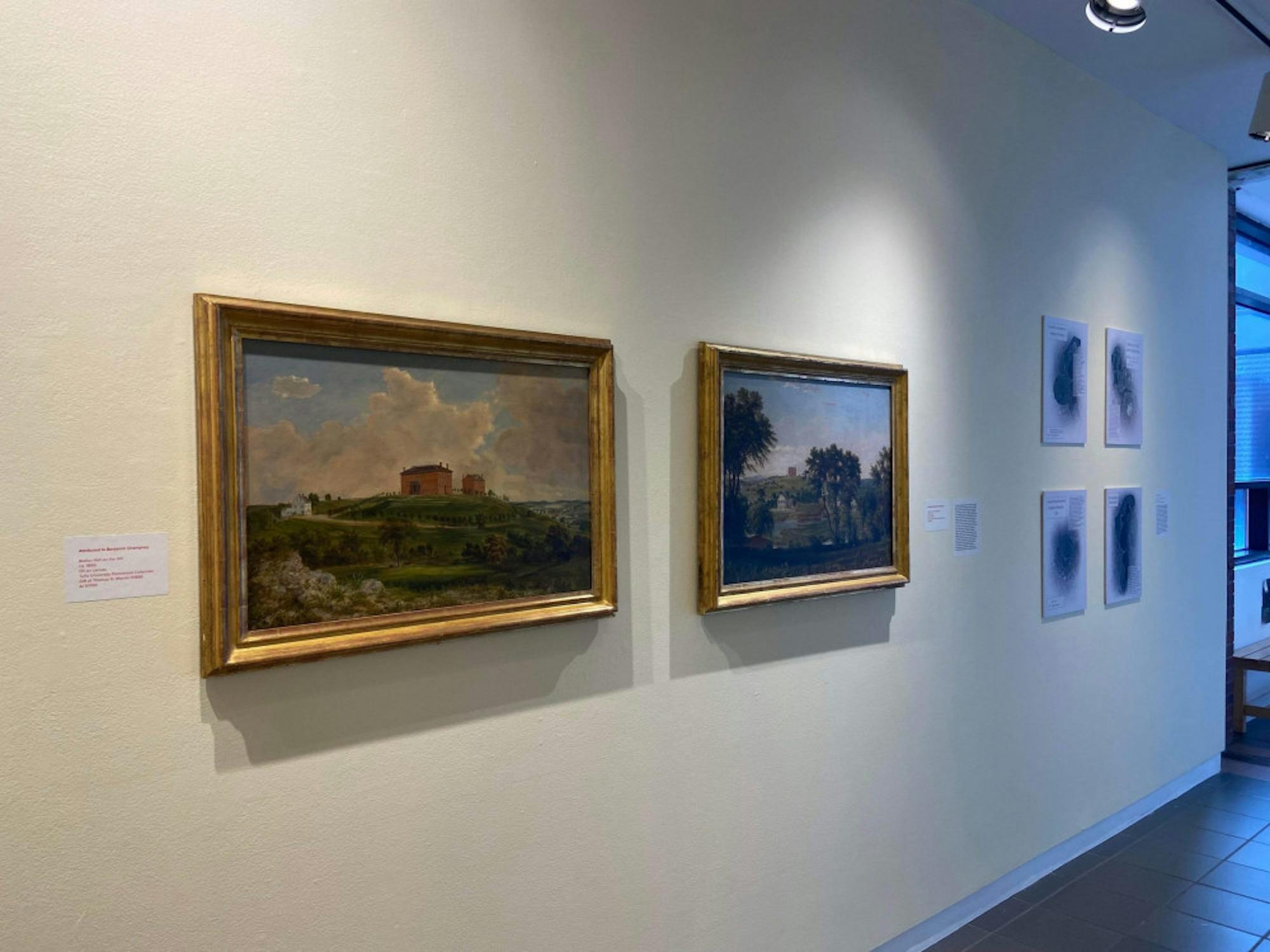In the Aidekman Arts Center, the Tufts University Art Galleries present art with poignant stories, carefully curated by members of the Tufts community. Each exhibit showcases the current passions that the art world at Tufts wishes to share with a greater audience.
A colorful mural, situated before the center’s doors in the Jackson Gym parking lot, stretches with striking blues, greens and reds. The seemingly movinggeometric shapes cause the surrounding gray parking lot to fade into the periphery.
Artist Erin Genia created the mural. Her work's focus is Native American and Indigenous arts and culture. She teaches about this topic and creates art with varying media to highlight its importance. The piece is titled "Wakpa" which comes from the word used for river in Dakota. Specifically, Genia created the mural as a depiction of the Mystic River, the local body of water near Tufts. Genia hopes to honor an Indigenous perspective with the mural: the mosaic of its colors representing, among other things, the clay, water and earth, critical Native American daily resources. In addition to its effects on indigenous populations, Genia’s work shows how colonialism and land seizure changed the river significantly, as well.
The artwork is a part of "Unsettling the Archive: Exploring Tufts' Relationships with Land,"an exhibition in the Aidekman Arts Center. The exhibition has used materials from the Tufts University Permanent Art and Tufts Digital Collections and Archives to present a collection of pieces that aims to further a dialogue about the history of Tufts’ location.
The Slater Concourse Gallery is an open hallway past the entrance of the center. The following art, the bulk of the collection with the mural "Wakpa," starts with oil paintings from the archives. The pictures in gold frames highlight early scenes of the Tufts campus from the 19th century. With each painting, Tufts’ buildings accumulate, showcasing how the university’s construction altered land stolen from the Indigenous population.
The exhibition also features maps that outline Saunkskwa lands, starting in the 1500s and ending in the 1700s. As the years progress, English colonizers can be seen invading the Indigenous land; colonialism left a dangerous impact even before Tufts’ establishment in 1852.
The Indigenous lands that Tufts now occupies once belonged to the Massachusett and Wôpanâak peoples. In the late 16th to early 17th centuries, the female tribe leader Squaw Sachem of Mistick, also called the Saunkskwa of Missitekw, reigned. In a portrait of Saunkskwa, her striking figure stands in front of a background detailing the area’s distinctive natural elements. The piece serves to paint a narrative of the land, emphasizing the historical figures that impacted its modern foundation.
Immediately to the left of the entrance, glass doors open to a large gallery with colorful and playful art. Paintings, photographs and hanging sculptures fill the space.
This show is called "Staying With the Trouble." The title comes from a book written in 2016 by Donna Haraway, "Staying With the Trouble: Making Kin in the Chthulucene."Haraway is an ecofeminist; in her book, she maintains that society must learn to cultivate a healthier relationship with the world and its living parts. She references Indigenous knowledge in her steps for a solution.
Judy Chicago’s work stands out in the gallery. It features colorful photos with female figures painted in strange colors. The artist collaborated with students from the California Institute of the Arts’ Feminist Art Program.
Student Faith Wilding is painted green in one piece. Her body is smothered by red smoke; she sits in front of a desolate desert. Itcomments on the oppressive, often destructive actions of male artists who dominate the Land Art genre. The smoke, specific colors and vulnerable body emphasize the lighter parts of the genre, and how this perspective is powerful too, perhaps even more so than the better known pieces created mainly by men.
Down the stairs is the final exhibition: "Connecting Threads / Survivor Objects." The collection features objects from the past which tell stories of Armenian communities. The relics emphasize the richness of the culture almost decimated by the Ottoman Sultan Abdul-Hamid II in the 1890s and the Armenian Genocide of 1915–22.
Tufts University Art Galleries explore engaging and critical stories of other communities and their relationships to our own community here at Tufts. They provide opportunities to use art to expand our perspectives and knowledge in crucial ways.
Anyone can be part of the art community at Tufts: simply visit the galleries and learn. "Unsettling the Archive: Exploring Tufts’ Relationship with Land" is open until April 24.






